
Blackened Le Creuset Originally posted by flickr user Rochelle, et. al.
Hopefully, she made some dumpster diver's day. My aunt found an L.C. green dutch oven in precisely this way. Burned, abandoned, alley. She took it home, cleaned it properly and now uses it all the time.
OK, so this leads me to today's topic: How to care for and clean your enameled cast iron (are you sick of hearing the term Le Creuset? I am, but, at least now I know how to spell it correctly). Although incredibly durable, enamel, as I found out the hard way, can be scratched or chipped if you don't handle it correctly. Use wooden or plastic utensils instead of metal when cooking as metal spatulas, whisks, etc can scratch the enamel, weakening the molecules which, in the future can lead to cracking and chipping. That said, hand mixers are obviously a bad idea.
Yes:
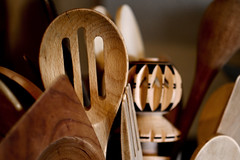
Kitchen Essentials Originally uploaded by Flickr user Ginny Griffin
No:
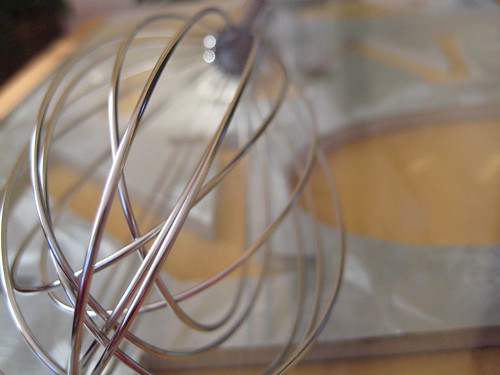
Tool Originally uploaded by Flickr user 16thLetter
Enameled cookware is meant for slow cooking at medium-low temperatures. Le Creuset suggests you never use high heat on the stove top and avoid temperatures above 375 degrees in the oven. The handles of the newer pots are made of material called phenolic which is a laminate of various materials, usually plastic or glass held together with resin. Handles may melt above the suggested 375 degrees. I didn't know about this temp limit until doing the research for this post, and I have used mine up to 500 degrees with luckily no problems with the enamel or handles.

Image courtesy of CutleryandMore.com
However if you can buy melt it you can purchase replacement handles. Don't put pots with wooden handles into the oven; they can scorch or even catch on fire.
You also want to avoid creating huge temperature differences. You don't want to take a hot pan from the stove and fill it directly with cold water. This can cause thermal shock, which may result in cracks as the enamel contracts as it is cooled too quickly. Wait until your pot has cooled down so you can pick it up without pot holders and then fill it with warm water to soak.
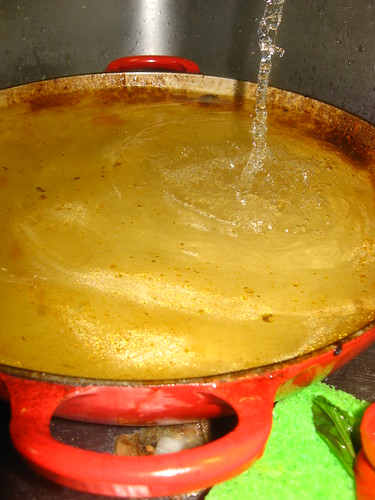
Unlike regular cast iron, the enamel creates a non-permeable surface so it doesn't need seasoning. Because of this, its OK to use soap and water to clean your pots. The suggested method is to fill your pot with warm soapy water and allow it to soak. After a while you will notice the grime should come off just by doing a quick wipe with a wash cloth.
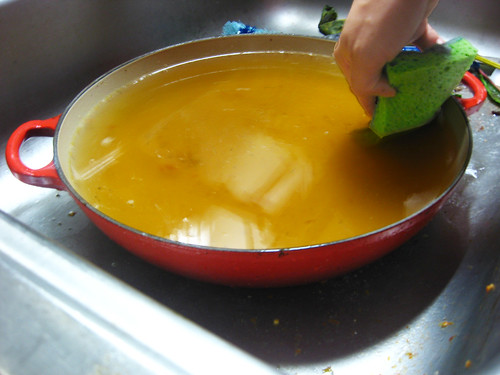
If you use a sponge, always use the soft side. Avoid abrasives, especially steel wool! They even say not to use the plastic abrasive side of your sponge, but I occasionally use it and have not had any ill affects. I suppose it small scratches could build up over time and cause cracks, so if you want to be safe, just use soft sponges.
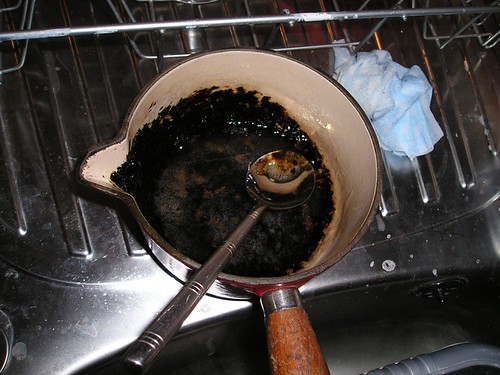
Le Burnt Creuset originally posted by Flickr user Rachel and Bed.
But what do you do if you if you really burn that shit on. Everyone says you should start with soaking, if that doesn't work, try boiling for a while to see if that loosens up the food particles. People also suggest baking soda and vinegar. Just be careful with being too rough with scrubbing, because you don't want to chip your enamel. Here is some good advice on cleaning black grime buildup which can accumulate on the bottom of your pans.
There's tons of info on the web to help with a menagerie of crazy scenarios from burnt pots with a stink that won't quit to pots where the enamel has completely melted off. If worse comes to worse and your pot is just fucked, you can always try utilizing the lifetime warranty. If L.C. won't allow the warranty due to "abuse" try taking it back to the store you got it from, I've heard, most stores usually just replace it no questions asked.

Burned Pot Originally uploaded by Flickr user Fibby
Some good tips to avoid burning your pots:
- Don't cook on high heat
- Don't heat an empty pan
- Occasionally stir when cooking foods with high sugar content (sucrose, fructose etc), as sugar is easy to burn
- DON'T FORGET YOUR FOOD ON THE STOVE!
Oh, wait I forgot. This is a food blog, not a cookware blog. Enough product pushing. Le Creuset isn't even paying me for this. I should get cooking.



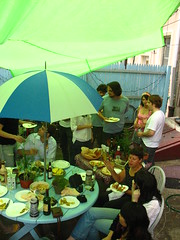
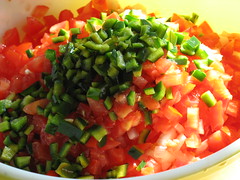

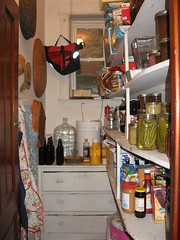




No comments:
Post a Comment